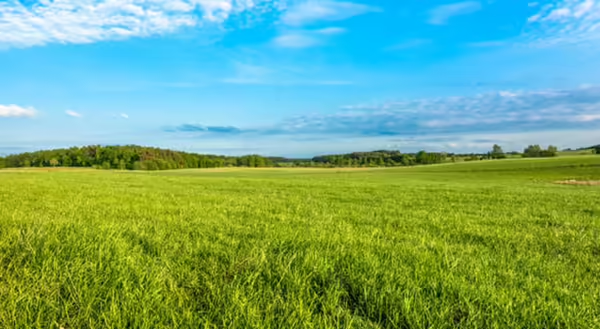
Are you short on hay? Are your pastures struggling and grazing days coming up short? Do you need an emergency forage if it turns dry this summer? If you answered yes to any or all of these questions, you may need to look into planting a summer annual forage.
Adding a summer annual forage to available acreage can help fill forage needs, add grazing flexibility, and provide a drought tolerant forage. While utilizing tillable acreage for summer annual forage production is an option, consider areas that may have been heavily abused from winter feeding or sacrifice paddocks that may benefit from the natural weed control of a competitive summer annual stand. Then, following the summer annual with a more permanent perennial pasture seeding in late summer or early fall. Summer annuals also work well before fall-seeding alfalfa.
There are several different options in the summer annual category. Forage sorghums have increased in popularity for a silage alternative and obviously, Illinois farmers know how to grow corn for silage. Teff is also a consideration for those wanting to produce a high quality, finer-leafed forage that can be dry baled. However, for grazing and summer haying, the primary options for farmers are sorghums and millets
Sorghum-sudangrass is a popular option that can handle a wider range of soil fertility and can be planted into slightly lower soil temperatures (~60 degrees F). Millets perform well on good fertile soils and should be planted into soil temperatures of 65 degrees or above. Planting depth should be approximately .75" to 1" in depth.
In most cases, these summer annuals will be ready to graze 6 to 8 weeks after planting. Turning in for grazing when plants are 18 – 24" is recommended. Grazing should be stopped when 1/3rd of the plant height remains or stopped before grazing under 8 inches, whichever is greater. For haying, plants should be allowed to reach flag leaf stage. Mowing heights should be adjusted to leave adequate height for regrowth if more than one cutting is desired. Again, plants grow back more quickly if 8 inches of stubble height is maintained.
It is important to understand that summer annuals require management. Potential hazards to animal health include prussic acid poisoning and nitrate toxicity. Pearl Millet is a safer option when it comes to prussic acid poisoning. When grazing sorghums, prussic acid poisoning, also referred to as cyanide poisoning, is a concern. Concern should be significant when the plant is stressed. A frost is the most commonly discussed stress, but even overgrazing and especially overgrazing immature plants can cause elevated concern for prussic acid poisoning.
High nitrogen rates or excess manure fertilization can cause increased risk for elevated nitrate levels. It is recommended that plants be tested for nitrates prior to grazing and that grazing heights are managed to leave the bottom 1/3rd of the plant or 8 inch stubble height, whichever is greater. When adding fertility at planting, consider the previously statements. In general, adding forty units of nitrogen is plenty and may not be necessary in a grazing scenario or where manure has been applied.
Making sure cattle are full at turnout is important for animal health and minimizing bloat risk. Make sure cattle have had plenty of feed and water prior to turning into summer annuals. Monitor cattle behavior attentively for the first 48 hours after turnout. Do not allow cattle to overgraze. This increases risk of nitrate poisoning and reduces forage re-growth.
Limited forage supplies, poor pasture productivity, and drought management are all good reasons behind considering planting a summer annual forage. Summer annuals can help fill forage gaps in the summer or help you build forage inventories for winter feeding. They are drought tolerant and can offer much needed forage in the summer slump. Be very aware that these forages need monitored for nitrate levels prior to and during grazing. The concern of prussic acid poisoning also exists when using sorghums and sorghum-sudangrass. With careful management, summer annual forages can be a valuable component to solving forage inadequacies.